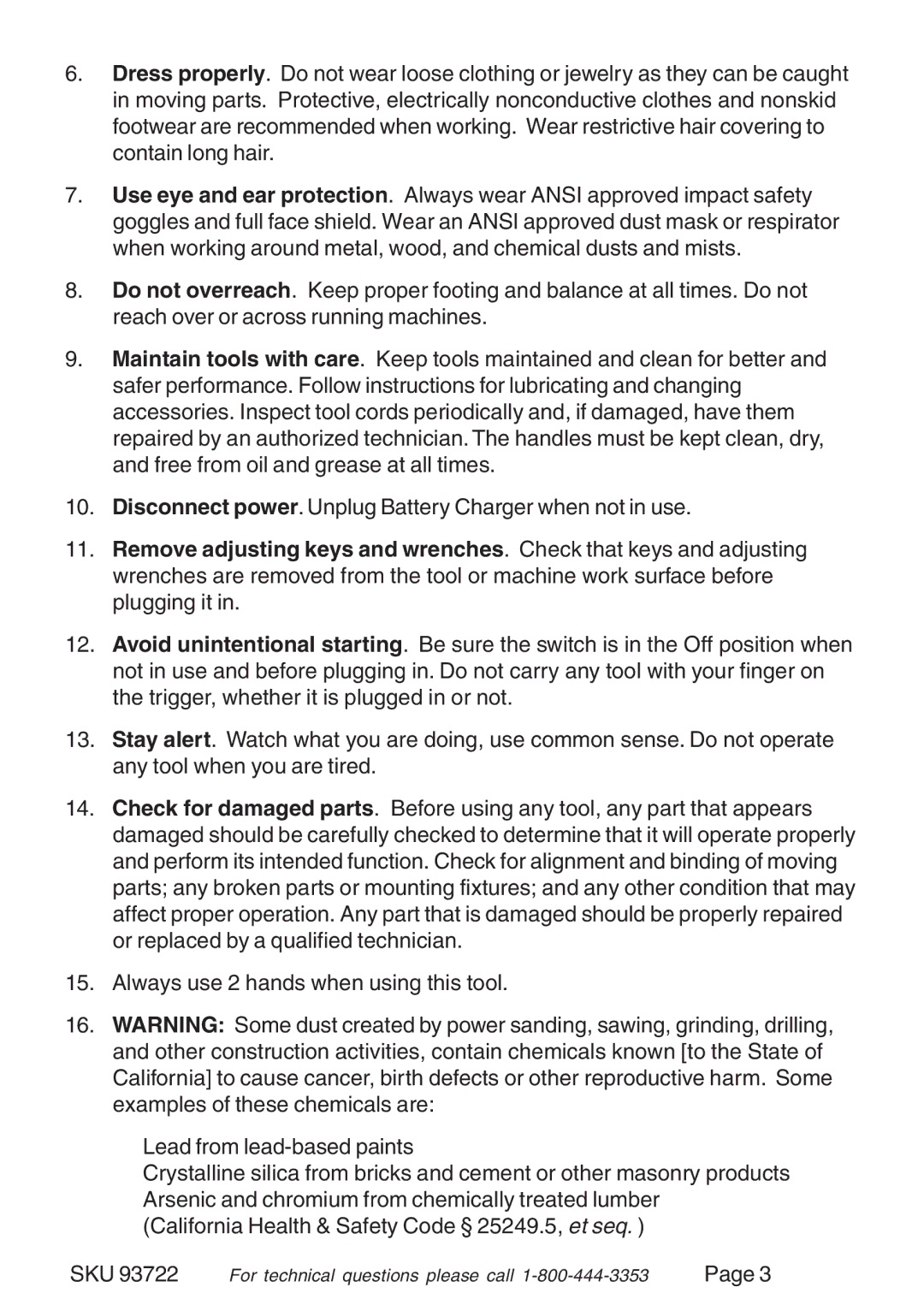6.Dress properly. Do not wear loose clothing or jewelry as they can be caught in moving parts. Protective, electrically nonconductive clothes and nonskid footwear are recommended when working. Wear restrictive hair covering to contain long hair.
7.Use eye and ear protection. Always wear ANSI approved impact safety goggles and full face shield. Wear an ANSI approved dust mask or respirator when working around metal, wood, and chemical dusts and mists.
8.Do not overreach. Keep proper footing and balance at all times. Do not reach over or across running machines.
9.Maintain tools with care. Keep tools maintained and clean for better and safer performance. Follow instructions for lubricating and changing accessories. Inspect tool cords periodically and, if damaged, have them repaired by an authorized technician. The handles must be kept clean, dry, and free from oil and grease at all times.
10.Disconnect power. Unplug Battery Charger when not in use.
11.Remove adjusting keys and wrenches. Check that keys and adjusting wrenches are removed from the tool or machine work surface before plugging it in.
12.Avoid unintentional starting. Be sure the switch is in the Off position when not in use and before plugging in. Do not carry any tool with your finger on the trigger, whether it is plugged in or not.
13.Stay alert. Watch what you are doing, use common sense. Do not operate any tool when you are tired.
14.Check for damaged parts. Before using any tool, any part that appears damaged should be carefully checked to determine that it will operate properly and perform its intended function. Check for alignment and binding of moving parts; any broken parts or mounting fixtures; and any other condition that may affect proper operation. Any part that is damaged should be properly repaired or replaced by a qualified technician.
15.Always use 2 hands when using this tool.
16.WARNING: Some dust created by power sanding, sawing, grinding, drilling, and other construction activities, contain chemicals known [to the State of California] to cause cancer, birth defects or other reproductive harm. Some examples of these chemicals are:
Lead from
Crystalline silica from bricks and cement or other masonry products Arsenic and chromium from chemically treated lumber (California Health & Safety Code § 25249.5, et seq. )
SKU 93722 | For technical questions please call | Page 3 |
